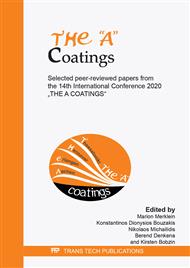p.3
p.11
p.19
p.28
p.39
p.45
p.53
p.61
Influence of Tool Wear on the Load-Bearing Capacity of Shear-Clinched Joints
Abstract:
Shear-clinching allows the joining by forming of dissimilar materials with high differences between their mechanical properties without additional fasteners. Since the lower joining partner is indirectly shear cut during the process, even ultra-high strength materials can be joined. However, the cutting of the high-strength materials as well as the extrusion of the upper joining partner leads to high process forces and therefore to high tool loads. This applies in particular for the die, which is highly stressed during the cutting phase and therefore plastically deformed. Within the scope of this work, the influence of the occurring wear on the formation of the joint and its load-bearing capacity is analyzed for a scope of 500 strokes. For this purpose, press hardened 22MnB5 is used as lower joining partner. Its high strength leads to the plastic deformation of the cutting edge, which increases within the first 200 strokes. Afterwards only minor changes occur. Yet, no effect of the occurring wear on the joint formation and the joint strength, which was tested under shear and tensile load, could be determined. Functioning joints could still be produced for more than 500 strokes as the load-bearing capacity remained on a comparable level.
Info:
Periodical:
Pages:
3-10
Citation:
Online since:
October 2020
Authors:
Keywords:
Price:
Сopyright:
© 2020 Trans Tech Publications Ltd. All Rights Reserved
Share:
Citation:


